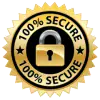Analysis of Scenario and TOGAF Guidance
In this scenario, the company has completed significant groundwork for its Implementation and Migration Planning. A consolidated gap analysis, risk assessment, and Business Transformation Readiness Assessment have all been completed, and initial deliverables, such as the draft Implementation and Migration Plan v0.1, the Architecture Roadmap, and the Capability Assessment, are in place. The project will follow a phased implementation over four years due to the complexity and risks involved.
TOGAF’s Phase F (Migration Planning) requires prioritizing projects, aligning resources, and ensuring coordination with existing management frameworks. Key next steps include finalizing the Implementation and Migration Plan by refining work packages, assigning business values, aligning with organizational frameworks, and coordinating resources.
Explanation of Option A and Why It is the Best Answer
Option A is the best approach for the following reasons:
Assessing Impact on Other Frameworks:
TOGAF recommends evaluating how the Implementation and Migration Plan interacts with other organizational frameworks such as portfolio/project management, operations, and business planning frameworks. This ensures alignment and avoids conflicts, a critical step in a large organization with established management frameworks (TOGAF Phase F, Section 14.4).
Coordinating with these frameworks allows for smoother integration across departments, which is essential in this multinational and multi-divisional context.
Assigning Business Value to Work Packages:
Assigning business value to each work package enables prioritization based on return on investment (ROI), stakeholder priorities, and alignment with corporate goals. This aligns with TOGAF’s recommendation to use business value as a prioritization metric for work packages, helping to guide resource allocation (TOGAF Section 14.4.1).
Business value-driven prioritization is especially relevant given the four-year implementation timeline and complex, phased approach.
Resource and Project Prioritization:
Identifying and prioritizing projects within the plan while considering available resources and dependencies helps ensure that the phased implementation aligns with both strategic priorities and resource constraints. TOGAF emphasizes that careful project sequencing and resource planning are vital to ensure the feasible and effective execution of the target architecture (TOGAF Section 14.4.2).
Finalizing the Implementation and Migration Plan:
Gathering the remaining details for the final Implementation and Migration Plan ensures all necessary data, including prioritizations, resources, and dependencies, are documented, as recommended in TOGAF’s ADM Phase F. This results in a fully refined, actionable plan aligned with organizational goals and capabilities.
Why Options B, C, and D Are Less Suitable
Option B: While reviewing migration outputs and identifying priorities and resources is important, this option’s focus on solution development requirements and monitoring tools is premature and more relevant to implementation phases, rather than finalizing a migration plan. TOGAF Phase F emphasizes creating a comprehensive plan rather than focusing immediately on development and performance monitoring.
Option C: This option suggests using business value to prioritize projects and confirm transition phases with an Architecture Definition Increments Table, which is useful. However, it focuses on performance evaluation criteria and lessons learned, which are more pertinent to monitoring implementation progress rather than finalizing the plan. TOGAF’s guidance at this stage focuses on finalizing details and aligning the plan with organizational frameworks.
Option D: While configuration control of architecture documents is valuable, it is generally an ongoing activity within architecture governance rather than a step in finalizing the Implementation and Migration Plan. The recommendation to use an Implementation Governance Model and capture lessons learned is useful for long-term governance but is not directly relevant to finalizing the Implementation and Migration Plan itself.
TOGAF References Supporting Option A
TOGAF Section 14.4 (Phase F: Migration Planning): Highlights the importance of assessing the Implementation and Migration Plan’s impact on other frameworks, such as portfolio and project management, to ensure coordinated execution.
TOGAF Section 14.4.1 (Prioritization of Work Packages): Recommends prioritizing work packages based on business value to support stakeholder needs and organizational objectives.
TOGAF Section 14.4.2 (Resource Planning and Coordination): Stresses that careful resource planning and project sequencing are essential for phased implementations in complex environments.
In conclusion, Option A is the best answer, as it aligns with TOGAF’s guidance to assess the plan’s impact on other frameworks, prioritize work packages by business value, and gather remaining details to generate a comprehensive final Implementation and Migration Plan. This approach ensures a coordinated and strategically aligned rollout across the organization.




